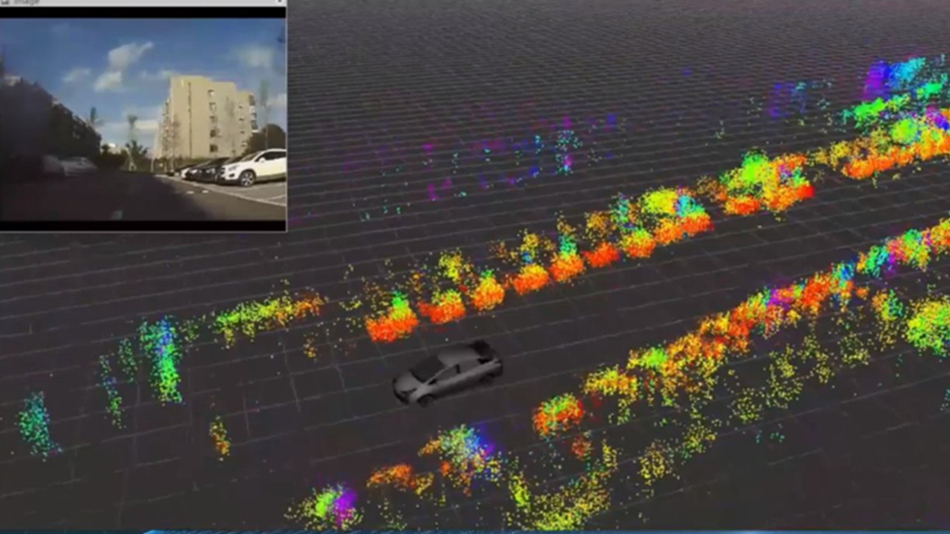4D Radar: The Next Evolution in Intelligent Sensing for Traffic and Security Applications

In the rapidly evolving world of intelligent sensing, 4D radar has emerged as one of the most significant technological breakthroughs in recent years. Building upon traditional radar’s capability to detect distance and velocity, 4D radar adds two additional dimensions—elevation and precise angular resolution—allowing it to generate a more complete and dynamic understanding of a scene. This new dimension of perception is transforming how we approach traffic management, security monitoring, and autonomous sensing systems.
What Is 4D Radar?
To understand what makes 4D radar revolutionary, it helps to compare it to earlier radar generations.
-
2D radar could only measure distance and velocity.
-
3D radar added angular direction, giving a partial spatial understanding.
-
4D radar, however, integrates range, azimuth, elevation, and velocity into a single coherent sensing system.
This means that 4D radar can not only tell how far away an object is and how fast it’s moving, but also exactly where it is in three-dimensional space—above, below, or to the side—while simultaneously tracking its motion trajectory in real time.
Technically, this capability is achieved through the use of Multiple-Input Multiple-Output (MIMO) radar arrays combined with advanced digital beamforming and high-resolution signal processing. These innovations enable a 4D radar sensor to create a precise “point cloud” similar to what a LiDAR sensor produces, but with the added advantages of all-weather performance, longer range, and lower cost.
How 4D Radar Works: The Technical Principles
At its core, 4D radar operates by emitting electromagnetic waves that reflect off surrounding objects. The sensor measures the time delay and phase shift of the returned signals to determine distance and velocity.
However, unlike conventional radar that relies on a single antenna beam, 4D radar uses an array of transmit and receive antennas to construct a multi-dimensional map of its environment. This architecture allows the radar to:
-
Resolve elevation angles, distinguishing objects that are above or below each other.
-
Identify object contours and shapes using fine-grained Doppler and angular resolution.
-
Track multiple targets simultaneously, even in cluttered or dynamic environments.
With the integration of machine learning algorithms, 4D radar systems can classify and interpret the detected signals—differentiating between vehicles, pedestrians, bicycles, and static obstacles with remarkable accuracy.
Key Advantages of 4D Radar Over Traditional Sensors
-
All-Weather Operation
Unlike optical or infrared sensors, radar waves are not affected by fog, rain, snow, or darkness. This makes 4D radar particularly reliable for outdoor applications such as traffic enforcement and perimeter surveillance. -
High Precision and Long Range
4D radar can detect objects at ranges exceeding 300 meters while maintaining centimeter-level accuracy. This allows for early detection and warning, which is crucial for accident prevention and security defense. -
Accurate Object Classification
With its advanced signal processing, 4D radar can identify different object types and track their movement patterns—enabling intelligent systems to predict behaviors, such as a pedestrian about to cross the road or an intruder breaching a restricted area. -
Cost-Effective and Scalable
Compared to LiDAR, 4D radar offers similar spatial awareness at a fraction of the cost, with simpler maintenance and better environmental resilience. This makes it ideal for large-scale deployment in cities or industrial zones.
Real-World Problems 4D Radar Solves
1. Smarter Traffic Management
Urban traffic systems face growing challenges—congestion, accidents, and the need for real-time situational awareness. 4D radar provides a robust foundation for intelligent traffic infrastructure by enabling precise detection and tracking of vehicles across multiple lanes.
For example:
-
In adaptive traffic signal control, 4D radar detects the flow and speed of vehicles approaching intersections, dynamically adjusting signal timing to optimize traffic flow.
-
In speed enforcement, 4D radar accurately measures vehicle velocity while distinguishing between overlapping targets, eliminating false readings common in traditional Doppler systems.
-
In collision prevention, roadside 4D radar sensors can warn of potential accidents before they happen by monitoring blind spots and detecting erratic driving behaviors.
2. Enhanced Security and Perimeter Protection
In security monitoring, false alarms caused by environmental factors—such as animals, rain, or wind—can severely reduce efficiency. 4D radar addresses this issue by providing intelligent target recognition.
For instance:
-
It can differentiate between a human intruder and a small animal based on movement patterns and radar cross-section signatures.
-
It enables 360-degree perimeter coverage, tracking moving targets behind fences or vegetation where cameras or infrared sensors fail.
-
When integrated with video analytics or AI-based platforms, 4D radar offers sensor fusion, providing a unified situational picture with fewer false alerts.
3. Autonomous and Connected Systems
As smart cities evolve, 4D radar is becoming an essential component of autonomous vehicles, drones, and robots. Its ability to perceive motion in four dimensions allows these systems to navigate safely, avoid collisions, and function effectively even in challenging visibility conditions.
Applications Across Industries
While traffic and security are the primary domains, 4D radar is also expanding into:
-
Smart parking systems for detecting available spaces and monitoring vehicle movements.
-
Industrial automation, where it ensures safety around robotic equipment.
-
Infrastructure monitoring, detecting movements or vibrations in bridges and tunnels for preventive maintenance.
The Future of 4D Radar Technology
As semiconductor technology advances, 4D radar sensors are becoming smaller, more energy-efficient, and easier to integrate. The combination of AI-driven analytics and edge computing will enable real-time decision-making directly on the sensor device, reducing latency and improving system autonomy.
In the near future, 4D radar is expected to be a cornerstone of smart transportation systems and intelligent security networks—a sensing technology that bridges the gap between radar robustness and visual intelligence.
4D radar represents the next leap in sensing technology, offering unparalleled precision, reliability, and intelligence. From managing complex traffic environments to protecting critical infrastructure, it provides a versatile and scalable solution for the world’s growing safety and efficiency demands.
As cities, vehicles, and security systems become smarter, 4D radar will not only see the world—it will understand it.
